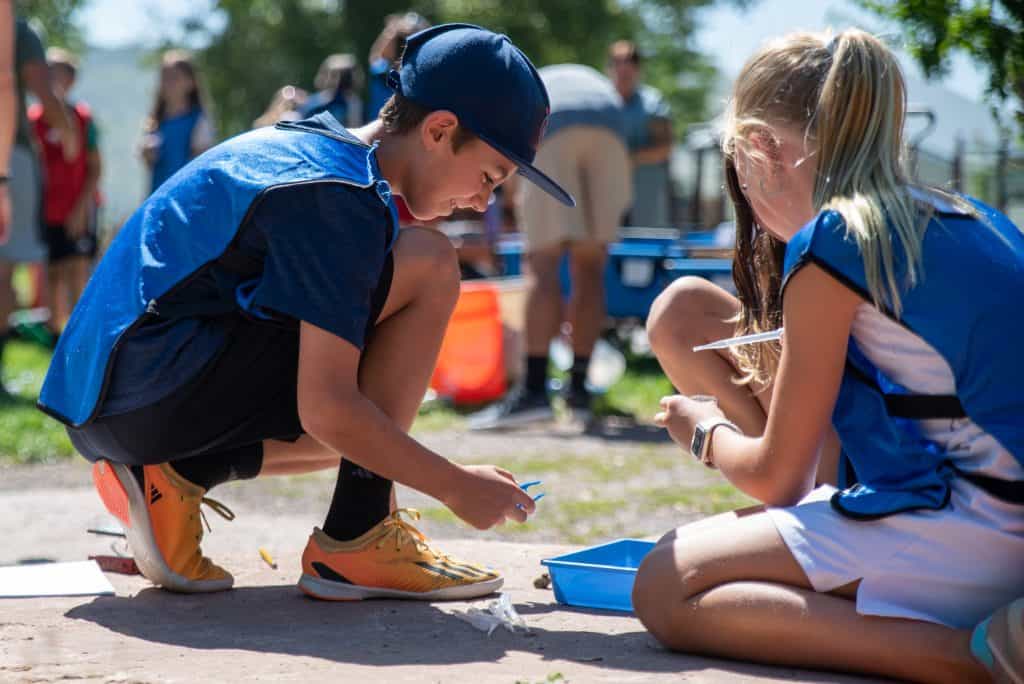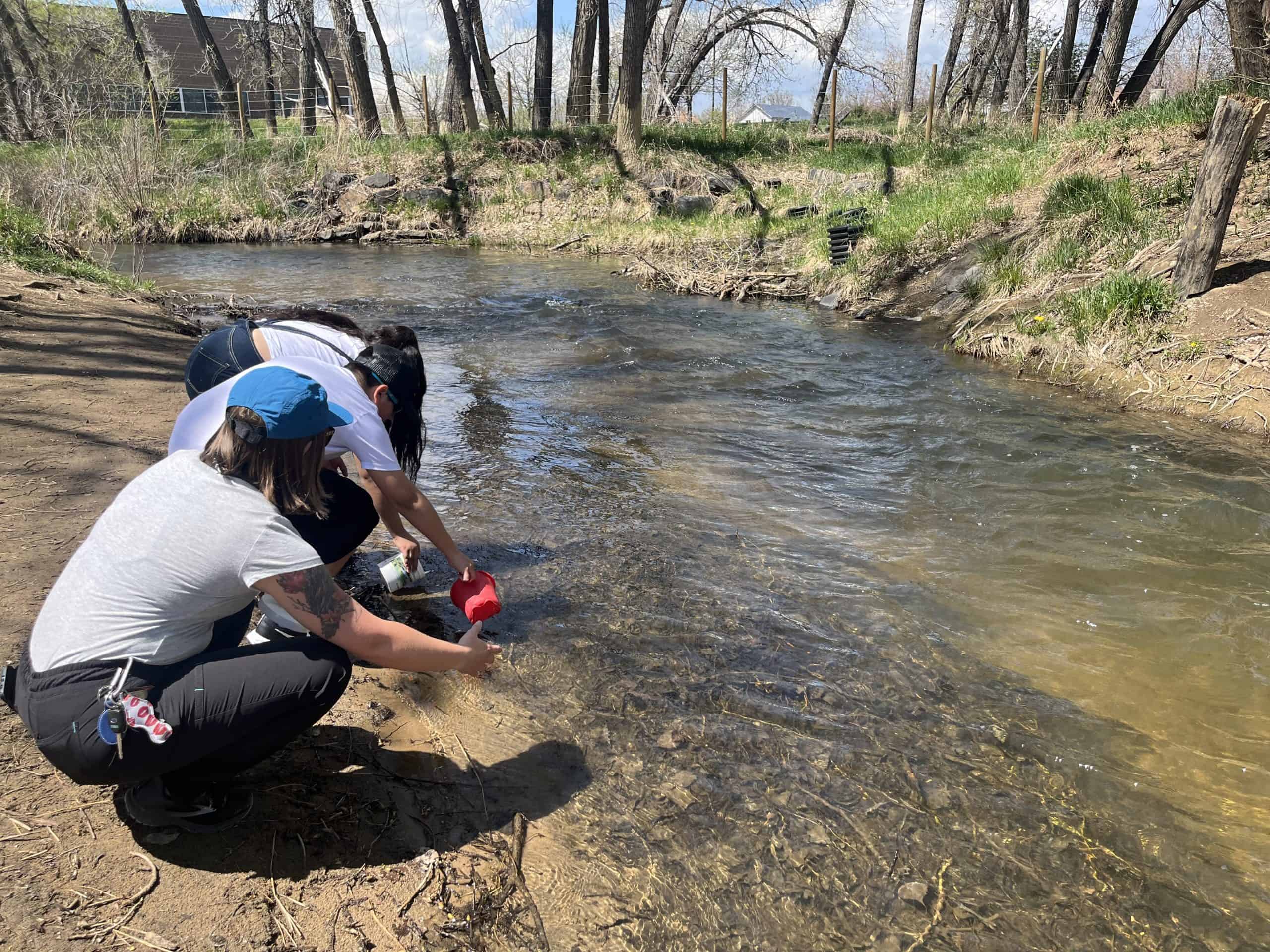Lyons and Indian Peaks Elementary Schools are collaborating on an exciting environmental leadership program, aimed at boosting eco-awareness among students. This initiative is the result of Lefthand Watershed’s mission to expand environmental education and data collection to nearby schools. By examining comparable data sets within the same watershed, the program facilitates valuable discussions and collaboration opportunities.
The main objective of the program is for fifth-graders at both schools to collect water quality data from the Lefthand watershed, which covers Lyons and Longmont within the broader St. Vrain Watershed, using accessible protocols designed for elementary students. This will provide a hands-on learning experience and enable student-led investigations and comparisons of data sets across the local watershed. Students at Lyons and Indian Peaks will conduct data synthesis sessions via Webex to discuss their observations on dissolved oxygen, pH levels, turbidity, and nitrates.
To collect data, students will follow detailed written protocols for conducting each test. “After the collection of water samples by groups, students dissolve pH, nitrate, and dissolved oxygen tablets in river water according to specific instructions about dissolve time and rest time,” explained Sarah Wegert, Lyons STEM Coordinator. “Subsequently, they’ll compare the resulting color change to the corresponding color chart for each test to determine the results. Students will use T-tubes, small plastic tubes with round disks at the bottom featuring a black and white pattern, usually about 8-10 inches in diameter, to measure turbidity. Beyond data collection, students will also engage in designing, constructing, and testing water filtration systems using different materials to explore the impact of pollution.”
Various human and natural influences, such as pollution and environmental changes, affect water quality, and a clean and healthy watershed is important for drinking water, agricultural use, animals, and aquatic habitats. “Adding data points upstream and downstream provides students with a concrete understanding of watershed health from a wide perspective,” shared Wegert. “We will capitalize on this opportunity by incorporating resources that enable students to see a large watershed from a perspective outside of Lyons or Longmont.”
Each school will partner with the Watershed Center to conduct three lessons leading up to a final data session. The lessons will take place at each school, with students gathering data independently. During the third lesson, Lyons students will brainstorm communication strategies and key messages for their Confluence event on May 4, where they’ll inform the Lyons Ecology Board and the public about efforts to improve watershed resilience.
“As environmental leadership schools, we are excited to forge connections with scientists and researchers in the field to further enrich our water quality analysis shared with the town’s ecology board,” said Wegert. “Our ultimate goal is to increase awareness and capacity as stewards of the watershed.”
In the final data sharing session, two students from each school will share hypotheses, review water quality data, analyze findings, and predict impacts in Webex breakout rooms. With guidance from educators, they will interpret and draw conclusions based on their upstream or downstream location within the watershed. Indian Peaks students will also share their data, impacts on the local community, and recommendations for their school community during Genius Hour Week in May.

Additionally, Lyons Elementary, Indian Peaks Elementary, Cal-Wood Education Center, and the Watershed Center are developing a new fifth-grade curriculum centered around off-campus data collection opportunities. In the coming months, they’ll develop and implement teacher training sessions and create support materials to enhance students’ learning experiences. Former Lyons Elementary student Wilma Spencer, now a ninth-grader at Lyons Middle Senior High School, is also collaborating with The Watershed Center and educators to develop and teach parts of the lessons at the schools, as well as provide feedback on lesson plans and curriculum development.
“Indian Peaks is excited about this collaboration with Lyons,” said Alice Nixon, Indian Peaks STEM Coordinator. “This program will give our students exposure and knowledge in new content areas that we have not participated in before. We are looking forward to using this opportunity to expand our knowledge on environmental challenges that our community is faced with, as well as how we can positively impact our environment.”
s and Indian Peaks Elementary Schools Collaborate Lyons and Indian Peaks Elementary Schools are collaborating on an exciting environmental leadership program, aimed at boosting eco-awareness among students. This initiative is the result of Lefthand Watershed’s mission to expand environmental education and data collection to nearby schools. By examining comparable data sets within the same watershed, the program facilitates valuable discussions and collaboration opportunities.
The main objective of the program is for fifth-graders at both schools to collect water quality data from the Lefthand watershed, which covers Lyons and Longmont within the broader St. Vrain Watershed, using accessible protocols designed for elementary students. This will provide a hands-on learning experience and enable student-led investigations and comparisons of data sets across the local watershed. Students at Lyons and Indian Peaks will conduct data synthesis sessions via Webex to discuss their observations on dissolved oxygen, pH levels, turbidity, and nitrates.
To collect data, students will follow detailed written protocols for conducting each test. “After the collection of water samples by groups, students dissolve pH, nitrate, and dissolved oxygen tablets in river water according to specific instructions about dissolve time and rest time,” explained Sarah Wegert, Lyons STEM Coordinator. “Subsequently, they’ll compare the resulting color change to the corresponding color chart for each test to determine the results. Students will use T-tubes, small plastic tubes with round disks at the bottom featuring a black and white pattern, usually about 8-10 inches in diameter, to measure turbidity. Beyond data collection, students will also engage in designing, constructing, and testing water filtration systems using different materials to explore the impact of pollution.”
Various human and natural influences, such as pollution and environmental changes, affect water quality, and a clean and healthy watershed is important for drinking water, agricultural use, animals, and aquatic habitats. “Adding data points upstream and downstream provides students with a concrete understanding of watershed health from a wide perspective,” shared Wegert. “We will capitalize on this opportunity by incorporating resources that enable students to see a large watershed from a perspective outside of Lyons or Longmont.”
Each school will partner with the Watershed Center to conduct three lessons leading up to a final data session. The lessons will take place at each school, with students gathering data independently. During the third lesson, Lyons students will brainstorm communication strategies and key messages for their Confluence event on May 4, where they’ll inform the Lyons Ecology Board and the public about efforts to improve watershed resilience.
“As environmental leadership schools, we are excited to forge connections with scientists and researchers in the field to further enrich our water quality analysis shared with the town’s ecology board,” said Wegert. “Our ultimate goal is to increase awareness and capacity as stewards of the watershed.”
In the final data sharing session, two students from each school will share hypotheses, review water quality data, analyze findings, and predict impacts in Webex breakout rooms. With guidance from educators, they will interpret and draw conclusions based on their upstream or downstream location within the watershed. Indian Peaks students will also share their data, impacts on the local community, and recommendations for their school community during Genius Hour Week in May.
Additionally, Lyons Elementary, Indian Peaks Elementary, Cal-Wood Education Center, and the Watershed Center are developing a new fifth-grade curriculum centered around off-campus data collection opportunities. In the coming months, they’ll develop and implement teacher training sessions and create support materials to enhance students’ learning experiences. Former Lyons Elementary student Wilma Spencer, now a ninth-grader at Lyons Middle Senior High School, is also collaborating with The Watershed Center and educators to develop and teach parts of the lessons at the schools, as well as provide feedback on lesson plans and curriculum development.
“Indian Peaks is excited about this collaboration with Lyons,” said Alice Nixon, Indian Peaks STEM Coordinator. “This program will give our students exposure and knowledge in new content areas that we have not participated in before. We are looking forward to using this opportunity to expand our knowledge on environmental challenges that our community is faced with, as well as how we can positively impact our environment.”

